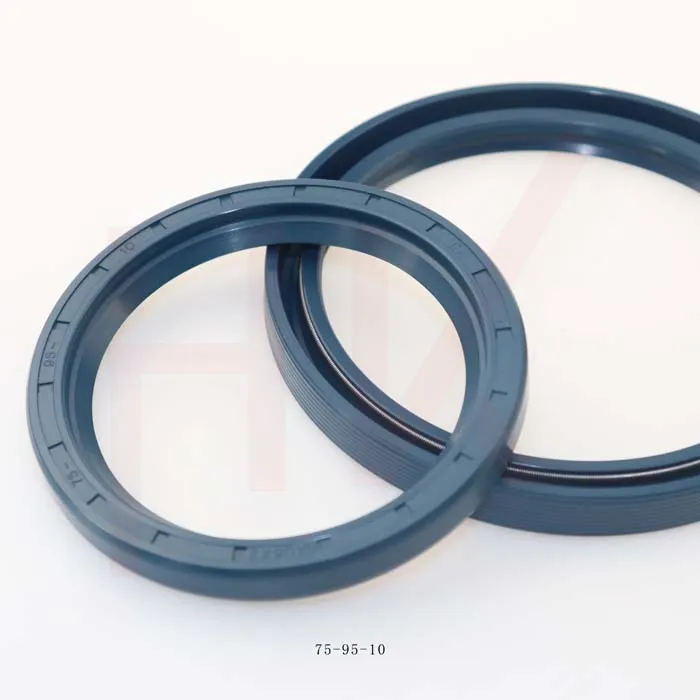Nov . 08, 2024 14:20 Back to list
Exploring the Cost Trends of Oil Seals in Today's Market
Understanding Oil Seal Prices Factors and Market Trends
Oil seals are critical components in various mechanical systems, playing an essential role in preventing the leakage of lubricants and contaminants. As businesses and consumers alike seek reliable and efficient machinery, the demand for high-quality oil seals continues to rise. However, one pressing concern for both manufacturers and buyers is the cost associated with these crucial components. In this article, we will explore the factors influencing oil seal prices and examine the current market trends.
Factors Influencing Oil Seal Prices
1. Material Composition The type of material used in the manufacturing of oil seals significantly affects their price. Common materials include rubber, silicone, polyurethane, and PTFE (Teflon). Higher-grade materials like fluorocarbon rubber (FKM) and nitrile rubber (NBR), which offer superior resistance to temperature fluctuations and chemical exposure, typically command higher prices. As manufacturers look to enhance durability and performance, the cost of these premium materials can drive up overall prices.
2. Manufacturing Processes The complexity of the manufacturing process also plays a vital role in determining oil seal prices. Processes such as injection molding, compression molding, and machining can vary in cost based on their energy consumption, labor requirements, and the intricacy of the designs. Custom-made oil seals designed to fit specific machinery or applications tend to be more expensive due to the specialized production techniques involved.
3. Market Demand and Supply Like any other commodity, oil seal prices are subject to the laws of supply and demand. The growing automotive, industrial, and construction sectors have increased the demand for oil seals, leading to potential price fluctuations. Conversely, if manufacturers ramp up production to meet this demand, it may stabilize or reduce prices. Seasonal trends and global economic conditions also influence market dynamics, impacting availability and cost.
4. Geographic Factors The location of production facilities and the target market can significantly influence oil seal prices. Regions with access to abundant raw materials or advanced manufacturing technologies may offer lower prices. Additionally, export tariffs, transportation costs, and regional economic conditions can affect the final price of oil seals in different markets.
oil seal price

Current Market Trends
As of late 2023, several trends are shaping the oil seal market. First, the push for sustainability is influencing both manufacturers and consumers. There is a growing demand for eco-friendly materials and production methods. Companies investing in sustainable practices may incur higher initial costs, but this can lead to long-term savings and brand loyalty.
Moreover, technological advancements are transforming the oil seal industry. Innovations such as the development of smart seals, which can monitor performance and wear in real-time, are emerging. While these advanced products can be pricier upfront, they offer significant cost benefits in reducing maintenance and downtime.
Lastly, the global supply chain issues experienced during the pandemic continue to have lingering effects. Manufacturers are adapting to new logistics constraints and are often forced to pass these costs onto consumers. This has led to overall price increases across many components, including oil seals.
Conclusion
In conclusion, the price of oil seals is influenced by various interconnected factors, including material composition, manufacturing processes, market dynamics, and geographic considerations. Understanding these elements can help businesses make informed purchasing decisions. As market trends evolve, staying updated on innovations and shifts in demand will be essential for both manufacturers and consumers. By being proactive and adaptable, stakeholders in the oil seal market can navigate the challenges and opportunities ahead, ensuring they get the best value for their investments.
-
TCN Oil Seal Metal Ring Reinforcement for Heavy Machinery
NewsJul.25,2025
-
Rotary Lip Seal Spring-Loaded Design for High-Speed Applications
NewsJul.25,2025
-
Hydraulic Cylinder Seals Polyurethane Material for High-Impact Jobs
NewsJul.25,2025
-
High Pressure Oil Seal Polyurethane Coating Wear Resistance
NewsJul.25,2025
-
Dust Proof Seal Double Lip Design for Construction Equipment
NewsJul.25,2025
-
Hub Seal Polyurethane Wear Resistance in Agricultural Vehicles
NewsJul.25,2025
-
The Trans-formative Journey of Wheel Hub Oil Seals
NewsJun.06,2025
Products categories
















